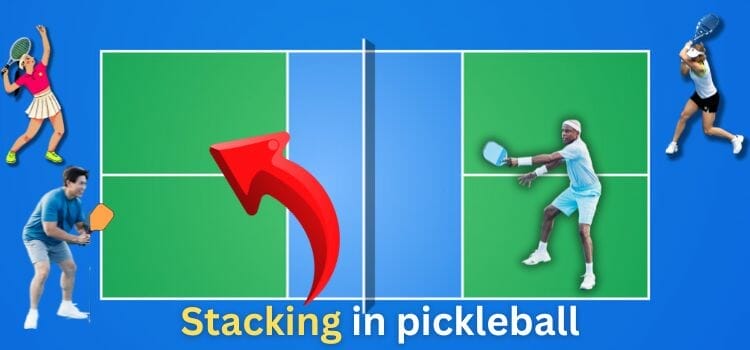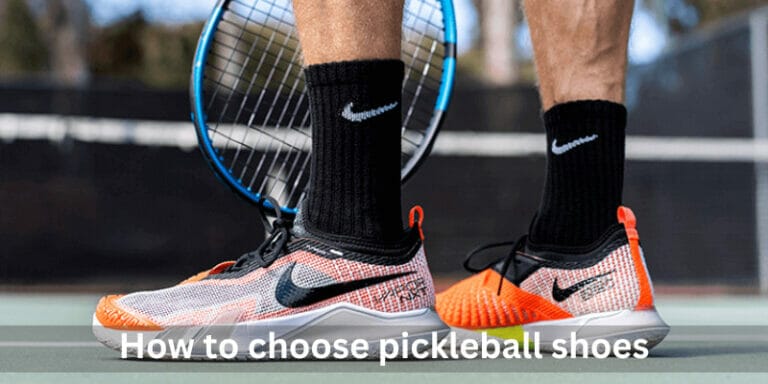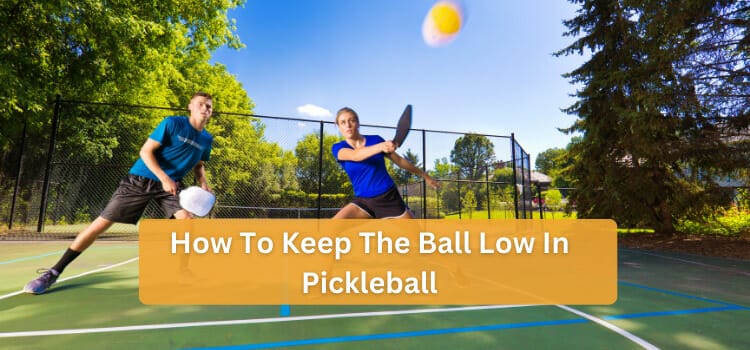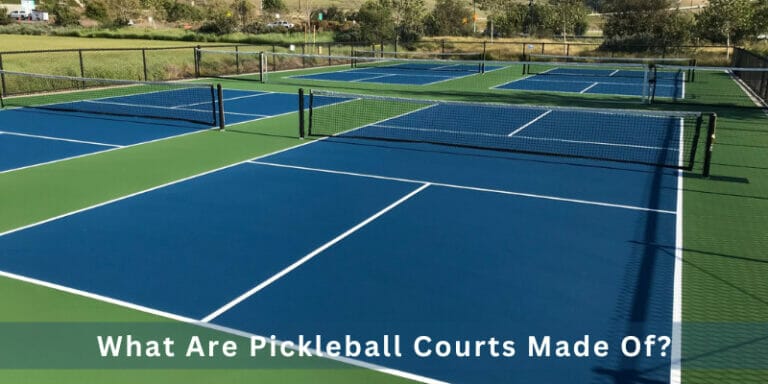How to Add Texture to Pickleball Paddle
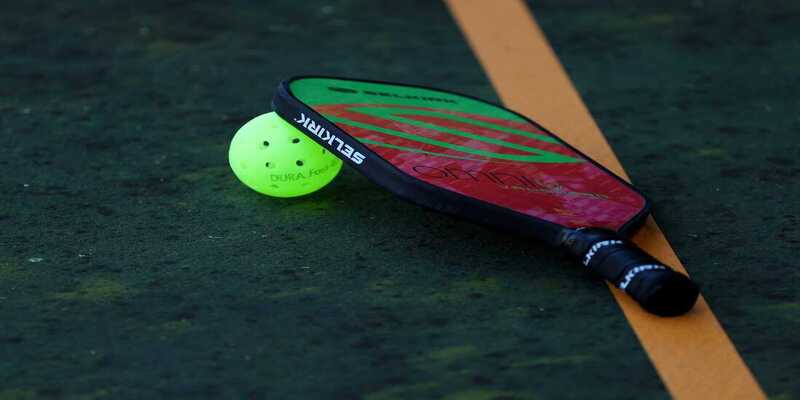
Discover the easy way to give your pickleball paddle a custom textured grip and make sure you have the advantage on the court!
The answer to how to add texture to a Pickleball paddle is simple. Use a combination of grip tape and an adhesive spray to create a custom textured grip for your paddle. Make sure to apply the tape and spray for the best results.
Yes, I do remember when I first started playing pickleball. The paddle felt like it was going to slip out of my hands with every shot! I knew I had to figure out how to add some texture to my paddle in order to keep it from slipping.
After doing some research, I found out that the best way to do this was with a combination of grip tape and an adhesive spray.
I followed the instructions and it worked! Now my paddle has a custom textured grip that gives me the control I need on the court.
And guess what in this article I am going to share how to add texture as I did.
How to add texture to pickleball paddle – Step-by-step guide
Adding texture to your pickleball paddle is a great way to improve your game and give you more control. It’s not difficult to do, and with a few simple steps, you can have a custom textured grip in no time.
Here’s what you need to have, before getting into the step-by-step guide.
Texturing tools:
- Grip tape
- Adhesive spray
- Sandpaper (optional)
Once you have all tools available now is time to add texture to your pickleball paddle, Here are the steps you need to follow:
Step 1: Select what type of texture you would like to add:
The first step is to decide what type of texture you want to add. You can choose from grip tape, short-fibered felt, or texturized rubberized paint.
Each one has its own advantages and disadvantages so you should evaluate your needs before selecting the best option for yourself.
Consider how much control you need over your paddle and then decide based on that.
Step 2: Prepare your paddle for the application:
Once you have selected the type of texture, you need to prepare your paddle for application.
This means cleaning and drying the handle, then lightly sanding it with medium-grit sandpaper until it is smooth and free of any oils.
This will ensure that the texture adheres to the paddle properly and lasts longer.
Step 3: Select an appropriate adhesive:
Once you have prepped your paddle, the next step is to select an appropriate adhesive for the texture that you want to add.
For grip tape or texturized rubberized paint, use a spray glue or contact cement that is suitable for gripping surfaces.
If applying felt onto the handle, use hot glue or craft glue. Make sure to read the instructions on the adhesive before using it as different products have different application requirements.
Step 4: Apply texture on the paddle:
Now that you have prepared everything, apply the texture according to the directions provided by its manufacturer and let it dry. If needed, you can also use a brush or roller to ensure an even application of the texture.
Step 5: Test and enjoy your newly textured paddle:
Once the texture has been applied and dried, you can test out your new pickleball paddle to see how it feels in action.
Having the right choice of the paddle, you should immediately feel a difference in control and handling which will enable you to play better with more accuracy.
Different Ways To Texturize Pickleball Paddles
There are several different ways to texture your pickleball paddle, depending on your needs and preferences.
They are:
- Grip tape
- Short fibered felt
- Texturized rubberized paint
- Pickleball paddle sprayer
Let’s take a closer look at each of these methods in detail.
Grip Tape:
Grip tape is a simple, cost-effective way to add texture and control to your pickleball paddle. It is easy to apply, being simply a matter of cutting the tape to size and affixing it to your paddle.
Grip tape is also easily replaceable if it gets worn out over time, so you don’t have to worry about having a permanent texture on your paddle.
Short Fibered Felt:
Short-fibered felt is slightly different from grip tape as it provides a softer, more cushioned feeling when playing with the paddle.
It’s not as easy to apply however and will require you to use hot glue or craft glue in order to properly adhere it to your pickleball paddle.
The advantage of using short-fibered felt is that it absorbs moisture better than grip tape, helping keep your hands dry during long matches.
Texturized Rubberized Paint:
Texturized rubberized paint is a great option for those who want to add a more permanent texture to their paddle. It is applied like regular paint, with a brush or roller and it provides an excellent grip that can last for many years.
Although this method takes more time and effort than the previous two, the long-lasting performance makes it worth considering if you are looking for maximum control and grip.
Pickleball Paddle Sprayer:
The pickleball paddle sprayer is one of the quickest and easiest methods to add texture to your pickleball paddle. It simply requires one layer of spray on the handle of your paddle, making it very simple and efficient.
The downside of this method is that the texture may not last as long as some of the other options, so keep this in mind when deciding which one to use.
Once you’ve selected the texture type that works best for your pickleball paddle, you can then apply it and test it out to see how it feels in action. Enjoy the improved control and handling that comes with a textured paddle!
Benefits of Adding Texture to Pickleball Paddle
Adding texture to your pickleball paddle is one of the best ways to get an edge in the game. It can provide you with more control and improve your accuracy while playing.
Here are some of the main benefits of adding texture to a pickleball paddle:
1. Improved Control:
The texture helps you grip the paddle better, allowing more precise control over your shots. It also helps reduce slippage and gives you better accuracy when playing.
2. Better Spin:
Adding texture to your paddle can help give you more spin and control on the ball when hitting it, making it easier to place shots in areas where your opponent cannot reach them.
3. Increased Durability:
Texturing the surface of a pickleball paddle can help make it more durable against wear and tear. This means that you won’t have to replace your paddle as often, allowing you to save money in the long run.
4. Comfort:
Textured paddles offer a cushioned feel for better comfort during play. The increased grip and cushioning make for an enjoyable experience while playing pickleball, giving you one less thing to worry about when competing.
By adding texture to your pickleball paddle, you can gain an edge over your opponents and improve your game.
Common mistakes to avoid how to add texture to pickleball paddle
When adding texture to your pickleball paddle, there are some common mistakes that you should avoid in order to ensure the best results. Here are some of the most important ones:
Mistake 1: Applying too much pressure when buffing or sanding
When applying texture to your paddle, it is important not to apply too much pressure as this can damage the surface of your paddle.
Mistake 2: Not evenly distributing texture
When using a spray-on texture or grip tape, make sure to evenly distribute them all over your handle so that you get the desired amount of grip and control.
Mistake 3: Using low-quality materials
Make sure to use high-quality materials when adding texture to your pickleball paddle in order to ensure the best possible results.
Mistake 4: Not thoroughly cleaning the handle
Before adding any texture to your paddle, make sure to thoroughly clean the surface of the handle in order to get rid of any dirt or debris that could interfere with the adhesive properties of the materials you are using.
And yes factors are yet another important point to consider when adding texture to your pickleball paddle.
Factors To Consider When Adding Texture to Your Pickleball Paddle
When adding texture to your pickleball paddle, there are several factors that you should consider in order to get the best results.
Here are some of the most important ones.
Factor 1: Type of Texture
The type of texture you choose is an important factor when it comes to enjoying improved performance on the court. Different textures provide different levels of grip, so make sure to experiment with different textures until you find one that suits your playing style.
Factor 2: Type of Adhesive
The type of adhesive used is also an important factor when it comes to applying texture to your pickleball paddle. Different types of adhesives provide different levels of grip and can have a lasting impact on the performance of your paddle.
Factor 3: Amount of Texture
The amount of texture you add to your pickleball paddle is also important, as too much or too little can drastically affect the performance of your paddle. Experiment with different quantities until you find one that works for you.
Factor 4: Durability
When adding texture to your paddle, it is important to consider its durability as well. Some textures may last longer than others, so make sure you choose one that will remain effective for an extended period of time.
How To Add Texture to Your Pickleball Paddle Without Messing Up Its Grip
Adding texture to your pickleball paddle can greatly improve your performance on the court and make for a more comfortable grip. But if done incorrectly, it could mess up the grip of your paddle and disrupt your game.
Here’s how to add texture to your pickleball paddle without messing up its grip.
Firstly, make sure to use the right type of materials for texturizing your paddle. The type of texture you choose will have a direct effect on the grip of your paddle. Choose materials that are durable, high-quality, and provide the right amount of grip for your playing style.
Secondly, make sure to measure the grip size of your paddle before adding any texture. This will help you choose the right type and amount of texture for your paddle without having to worry about it being too loose or too tight.
Thirdly, make sure to evenly distribute the texture when applying it so that you get even coverage across the handle. Unevenly distributed textures can affect your performance on the court, so be mindful during the application process.
Finally, make sure to thoroughly clean your pickleball paddle handle prior to texturizing it in order to remove any dirt or debris that may interfere with the adhesive.
By following these simple tips, you can add texture to your pickleball paddle without disrupting its grip or performance. Experiment with different textures and quantities until you find a combination that works for you. And always make sure to clean your paddle handle before texturizing it!
How To Texturize The Face Of Your Pickleball Paddle For Maximum Spin
Texturizing the face of it is a great way to increase spin and control when playing pickleball.
It is simply the process of adding a layer of texture to your paddle’s face, which can improve your game significantly. Here’s how to texturize the face of your pickleball paddle for maximum spin.
First, choose the type of texture you want to use. There are a variety of textures available, such as sandpaper and grip tape, so make sure to choose one that is best for your playing style.
Next, clean the face of your paddle before applying the texture. Make sure to remove any dirt or debris that could interfere with the adhesive properties of the texture.
Once you have chosen the type of texture and cleaned your paddle, apply it evenly across the face of your paddle. Make sure to use a high-quality adhesive so that the texture stays put for an extended period of time.
Finally, test out your new texture and make adjustments if needed. Experiment with different levels of texture until you find the one that works best for your playing style.
By following these steps, you should be able to texturize the face of your pickleball paddle for maximum spin and improved control on the court.
Conclusion
To sum up, adding texture to your pickleball paddle can improve your performance on the court in many ways.
From improving grip and spin to increasing control over the ball, there are many benefits to texturizing your paddle.
When applying texture, make sure to choose the right materials, clean it thoroughly and apply it evenly using a high-quality adhesive.
Experiment with different levels of texture until you find one that works best for your playing style. With these tips in mind, you should be able to easily add texture to your pickleball paddle without messing up its grip.
FAQs
Can pickleball paddles be textured?
Yes, pickleball paddles can be textured. Adding texture to your paddle can help improve grip and spin when playing pickleball.
Can I put a sticker on my pickleball paddle?
Yes, you can put a sticker on your pickleball paddle. However, make sure to use a high-quality adhesive and clean the paddle thoroughly before applying the sticker. Also, be careful not to cover up holes or other parts of the paddle that could affect its performance.
How do you customize a pickleball paddle?
You can customize your pickleball paddle by adding texture to the handle or face of the paddle. You can also personalize it with stickers, paint, and other decorations. Just make sure to use high-quality materials and follow all safety requirements when customizing your paddle.
Can you paint a pickleball paddle?
Yes, you can paint a pickleball paddle. However, make sure to use the right type of paint for the material of your paddle and follow all safety instructions when painting it. Also, be aware that some paints may affect the performance of your paddle in certain ways.

